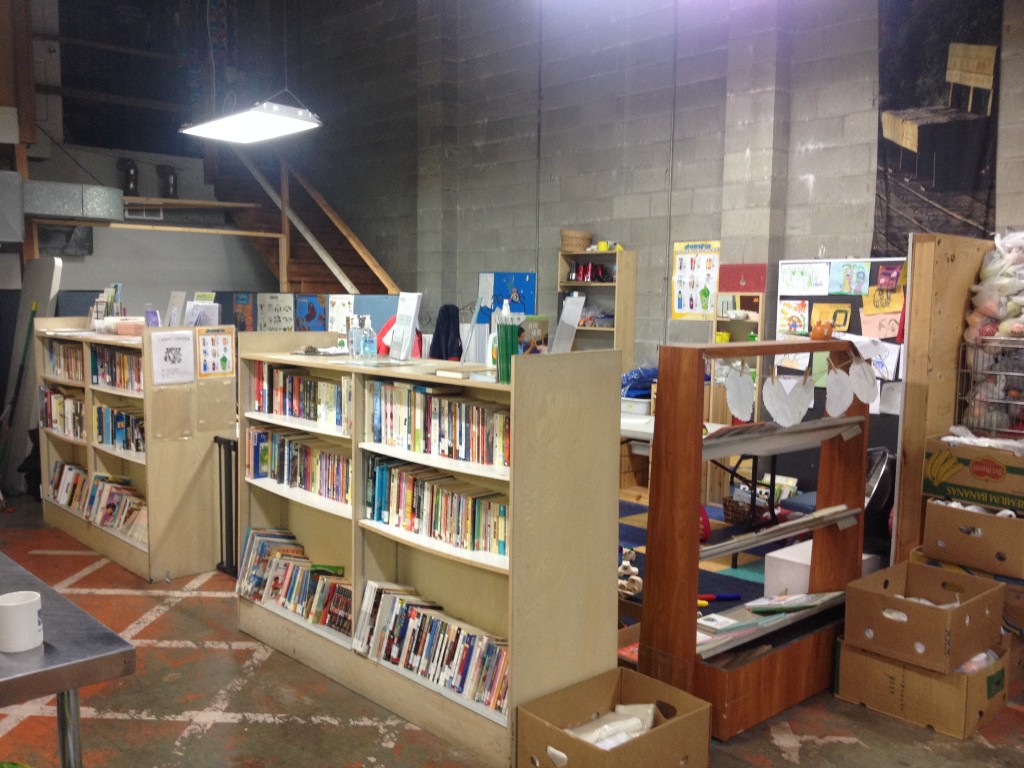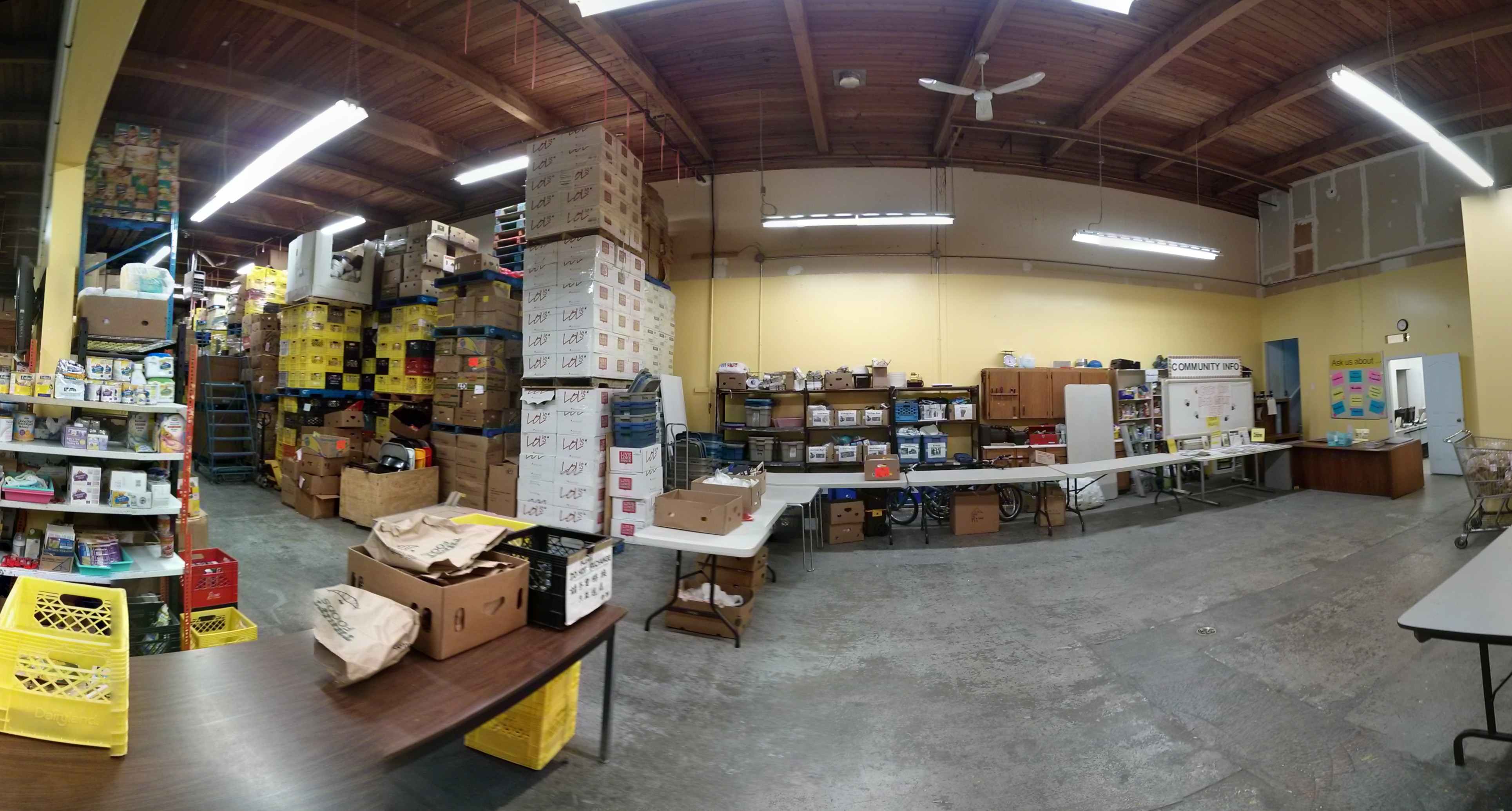In this blog post, we looked at the brainstormed “purpose and solution” of the two focus areas of our project. In the solution section we discussed various possibilities to what could solve some of the problems. We finished with a timeline to help keep our project on track to success.
Purpose
The purpose of the playroom re-design is to improve lighting, storage and the “vibe” of the environment. Our client is looking for a more bright and energetic child friendly environment where the kids just want to play. Below are 2 pictures of the overall space and the duct work.
Solution
The play area for children should be a more vibrant and welcoming atmosphere. To design effective improvements we took dimensions and made note of the activity during the site inspection.
Improving the Aesthetic Appeal and Storage of the Play Area:
There are visible ducts that hang over the edge of the play area. It is important to cover these ducts to increase the aesthetic appeal of this area. A design idea we are considering is covering the area with a sheet of plywood or drywall. We are thinking of painting and cutting the material to look like a castle. This will create a more welcoming area for the children. They will be entering the castle to play with some of the toys on that side.
To create more storage space it would be an effective use of space to replace the bookshelves with more stable structures that can be used to store items. Larger shelves and drawers can be used to separate the play area from the food distribution area while also creating more space for all the volunteers. This will create a more organized environment for the children.
To make the area more aesthetically appealing for the children it is important to make the area more bright and vibrant. Adding colour to the dividers and shelves that will act as separating walls can do this. Painting over the materials can make this improvement very easy.
There is a staircase on the side that has been blocked off from the children for safety reasons. Adding in compartments underneath the stairs can increase the storage space. This area should only be accessible by the volunteers to avoid hazards. There are many palletes around the warehouse where the food is stored. It is possible to use one of the palletes as a divider under the stairs. This can be used if rollers or hinges where placed at the bottom as the support.
Purpose
The purpose of the restructuring of the food distribution was mainly to increase overall efficiency and ease of food distribution. Much emphasis was put towards the reorganization of individual stations, as our team observed many empty and high density tables. The current food bank distribution layout is provided below.
Solution
After meeting with the client again on February 26, 2014 during the time of food distribution time our team was able to gain a better understanding of the project scope and purpose. The food distribution system requires improvements to create a more efficient method for customers and volunteers.
Improving the Distribution System:
The last couple tables in the food distribution system are allocated for food return and exchange of food items. A common item that was being returned was food cans, including soup and beans. The food cans are currently being distributed at the beginning of the system (following the organic fruits). A more effective method would be to locate the food cans closer to the return area to minimize the time it takes customers at the end. By also adding more tables at the end for the return area it would maximize the number of people that can use the space, creating a more effective system.
The area where the baked goods and bread is distributed becomes crowed very easily. This is due to bread being a popular food group and the tables in that area creating a corner with less space. An improvement to the system would be adding more tables to hold the bread and baked goods. More space will help the volunteers move around easily while distributing the food. This will also create more space for the customers to move around the corner.
A concern brought up by the client was regarding the distribution of the family bags that have been prepared prior to the distribution day. The lady that volunteers at this station has trouble having to turn around to get the required items for the customer. An improvement for this area would be to align the family bags alongside of her table to minimize the distance she has to move.
Time Line
| February 5th | Site Visit/Meet with Client |
| February 21th | Blog 2 Uploaded |
| February 26th | Site Visit |
| February 28th | Blog 3 Upload |
| March 5th | Group Meeting – Presentation Organization |
| March 7th | Blog 4 Upload |
| March 11th | Present plans
|
| March 18th | Deadline to accept options to client |
| March 19th | Group Meeting – Revise plans |
| March 21st | Blog 5 Upload |
| March 26th | Group Meeting – Plan Poster |
| March 31st | Poster session/Final details sorted out |
| April 2nd | Final Meeting and plans sent to client |
| April 3rd | Blog 6 Upload |
| April 4th | Project Complete
|



